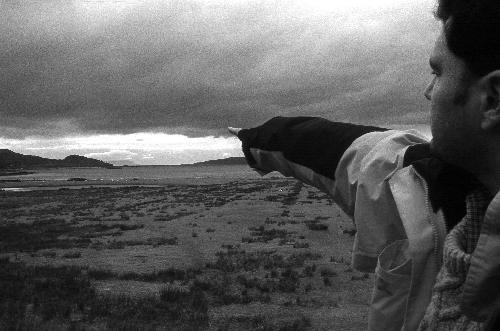
Discover mainland Britain's remotest pub and some of Scotland's wildest country, tucked away in a peninsula near Skye
The Madonna loomed out of the hurtling sea spray like a religious vision. “She was put up there by the Catholics,” bellowed Mark, our captain, over the roar of the rigid inflatable’s outboard and the slap-crash of grey Scottish waves. He squinted towards the rain-lashed statue perched on a rocky promontory, at the very tip of the Knoydart peninsula.
“The Reformation never really got this far, so she was never taken down.”
Frankly, I wasn’t surprised. The essential fact about Knoydart is its remoteness. Or at least – because remoteness is only a question of where you start out – its inaccessibility. Reaching out from the West Highlands towards Skye like a gnarled hand, this haunting peninsula can only be reached by a two-day hike across 900m knuckles, an infrequent 50-minute ferry ride around the fingers, or an exhilarating 10-minute RIB (rigid inflatable boat) ride from Mallaig – itself at the far end of one of Britain’s most spectacular train journeys – into its grip.
By the time I set foot on the jetty at Inverie – Knoydart’s only village, with just a score of houses, timber A-frames and a post office strung along the bay – I had been travelling from London for 18 hours. I could almost have gone to New Zealand, and part of me wondered if I actually had.
Fir and moss-covered larch spread up toward russet moorland and on to the cloud-capped peak of Sgurr Coire Choinnichean. Smoke rose slowly from the whitewashed chimney of The Old Forge pub. Apart from the ripples on the foreshore, the world was utterly quiet. Not even a mobile phone could shatter the moment: the jagged topography had rendered my phone gloriously signal-free.
As I was discovering, a stay in Knoydart is as much about what you escape as what you find. With no phone, no easy way out and no shop, just getting through the day becomes something of an adventure. You don’t just drop into The Old Forge – officially mainland Britain’s remotest pub, and one of its most welcoming – for a pint, but also to buy lamb, cadge a lift on a boat, or seek advice from the local rangers.
Once your basic needs are catered for, you’re in prime Monarch of the Glen hiking territory. Although a single road staggers a few kilometres around the headland from Inverie, and there are a couple of Land Rover tracks, most of Knoydart’s 130 sq km of glacier-scored, volcano-blasted ‘rough bounds’ (as it’s known) are accessible only the conventional way – by foot. In summer, Munro-baggers battle through the midges to scale its three 900m-plus peaks, but out of season you’ll see more golden eagles and red stags than fellow walkers.
You’ll also see tumbledown cottages scattered across the peninsula, evidence of the 2,000-odd crofters who lived here before the brutal 19th century Highland clearances. Today there are only 100 residents and the longest-standing family dates back 40 years.
Everyone here is an ‘incomer’, drawn from regular lives as picture researchers in London or podiatrists in Glasgow to the sublime scenery and – since 1999, when Knoydart achieved independence from a long line of English landowners – utopian air of this little community. “We just fell in love with it,” was the story I heard again and again from locals who, you feel, still haven’t stopped pinching themselves at their good fortune.
Most of the peninsula is now owned by the Knoydart Foundation, a registered charity dedicated to sensitively managing the area. The demands of self-sufficiency mean everyone here wears many hats – sometimes quite literally. Tommy McManmon, one of the two newly appointed rangers, is also the postman, the mountain-rescue leader and the fireman – and he has uniforms for all of them.
But running Knoydart is more than just dressing up: achievements so far include the reintroduction of native trees, an EU-funded deep-water jetty, and the installation of hydro-electric power (the spate of five-year-olds in Inverie is said to be down to the failure of the old generator six years ago – leading to long, dark nights for the locals...).
Attracting more visitors is also part of the plan, but with relatively few rooms and no road access, the tourist hordes are no likelier to make it here than the Protestant reformers before them.
For those who do come, a weekend won’t seem long enough; but a small dose goes a long way. On my last afternoon, I drove over the peninsula with Jim Manthorpe, the other ranger, to the tiny settlement at Airor Bay. As we jounced along in a decrepit Land Rover, slate-grey thunderclouds and shafts of sunlight prowled the moor.
Six red deer watched us pass, backlit by – I swear – a rainbow. When we reached the beach, I saw four dark shapes bobbing in the Caribbean-blue swell. “Those are common seals,” Jim said. “They’re actually the rare ones; the common ones are the grey seals.”
Where the rare is common, and vice versa: it was Knoydart in miniature.
For regional information, see www.road-to-the-isles.org.uk